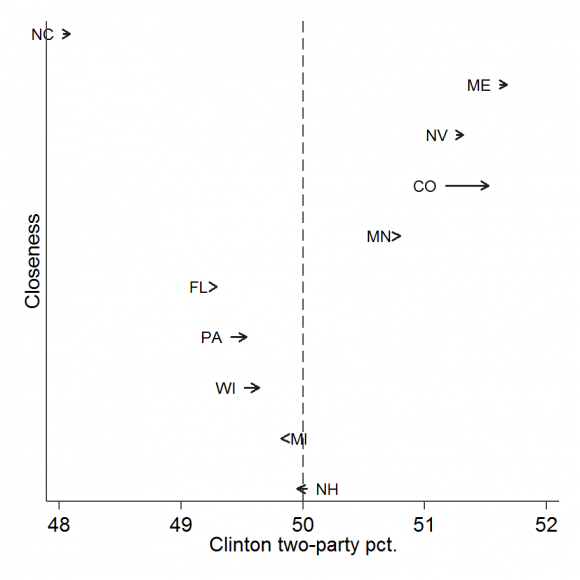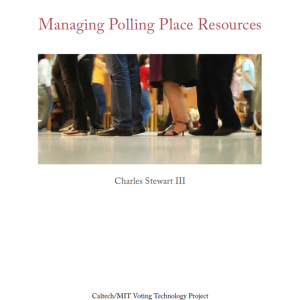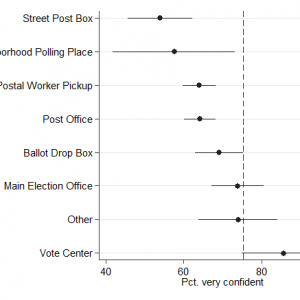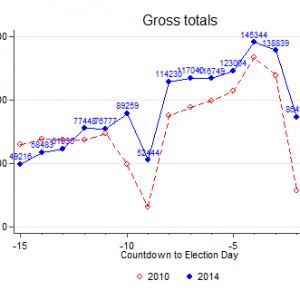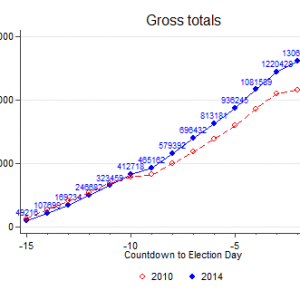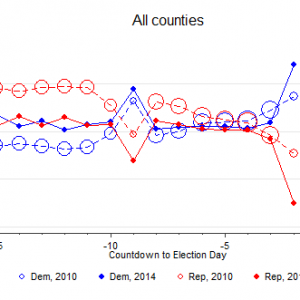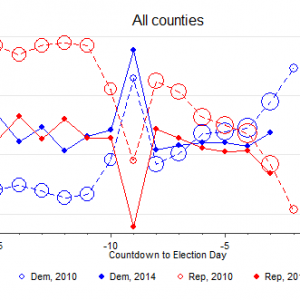Reports from Brooklyn about the “purge” of over 125,000 voters between last November and the recent presidential primary has turned the spotlight on the maintenance of voter lists. Today’s news brings word that the Kings County Board of Elections’ chief clerk apparently erred by removing voters from the rolls contrary to law.
Pam Fessler’s excellent NPR report on Wednesday about the rules governing removing voters from the rolls makes the point that the laws governing voter list maintenance are pretty clear. Voters (and reporters) don’t always understand those rules, and when they do, they don’t necessarily agree with them. For that reason, I’m going to sit back and wait for the reports of the New York City Comptroller and state Attorney General before passing judgement on what exactly happened and who was at fault.
That said, the whole story remains a bit of a mystery, first, because statistics about New York’s list maintenance activities are opaque and, second, no one really knows how many people “should be” on the voting rolls and, therefore, how many people “should be” removed when list maintenance activities are done.
New York’s murky voter registration statistics
On the issue of statistical opacity Every two years, the U.S. Elections Assistance Commission is required by the National Voter Registration Act (NVRA) to issue a report about voter registration activities at the state level. (Here is a link to the post-2014 report.) To prepare the report, the EAC sends a survey to the states asking them to report, at the county level, statistics that describe the number of voters removed from the rolls, and why they were removed. (The three major categories of removals are “failure to vote,” “moved from jurisdiction,” and “death.”) In recent years, most states have complied with the request to provide this detailed information, but not New York.
As recently as 2008, New York only reported statistics for the whole state, not for individual counties. In 2010 and 2012 New York finally started providing county-level statistics to the EAC, but the state backslid in 2014, providing no detailed breakdown for why voters were removed from any county in the state. Not only that, but New York reported that between the 2012 and 2014 elections, only 47,634 voters had been removed from the rolls statewide, which is approximately the same number removed by Delaware. (To provide further perspective, Florida removed over 484,000 voters and Pennsylvania removed over 853,000.)
Over the past few days, many people have asked me if the number of voters removed from the rolls in Brooklyn was unusual, to which I have to answer, “who knows?” because the relevant list maintenance statistics from New York (meaning the whole state, not just the city or one borough) are not being made public, as they are for most of the rest of the nation.
We don’t know how many people “should be” on the rolls
On the issue of how many people “should be” on the rolls and how many “should be” removed by list maintenance activities every year: It turns out that this is a very hard question to answer. One attempt to answer this question was made in a recent conference paper that I wrote with a Harvard graduate student, Stephen Pettigrew. (You can download the paper at this link.) Because there is no national registry of all eligible adults (at least one that is available to the public) and no single national voter registration list, we don’t know the “true” number of registered voters. (By “true number,” I mean people who are eligible to vote in the state in which they are registered, which excludes people on the rolls who have moved or died.) Thus, official voter registration lists are, to some extent, “too big,” but by how much is currently unknown (and hotly contested among various groups).
Even so, it is possible to get an approximate sense of how many voters should be removed from the rolls on an annual basis, since there are two reasons that dominate all others: moving out of a jurisdiction and dying. Let’s see where Brooklyn (Kings County) stands on those measure.
WARNING: Detailed calculations involving math follow
Deaths are easy. The Centers for Disease Control maintain a database that records the number of deaths in each county of the United States, broken down by age. In 2014 (the most recent year for which statistics are available), Kings County recorded 15,347 deaths among those 20 years and older. (Unfortunately, the CDC database breaks down population groupings in five-year intervals, so we can’t add the deaths of 18- and 19-year-olds. But, given the nature of death statistics, this is not a large number of people.)
Moving is a little more tricky, because there isn’t a national registry of movers, and the Census Bureau data is cumbersome to use to estimate how many people have moved out of a county or state. However, the IRS (who knew?) provides data about county-to-county migration, based on income tax filings. It can be used to estimate how many people move out of Kings County each year.
From what I can tell, between 2013 and 2014 (the most recent data available), about 110,000 people moved from Brooklyn — over 59,000 moving to other counties in New York and over 50,000 moving to other states. Not all of these are registered voters, of course, or are all of them eligible. The Census Bureau tells us that there were roughly 2.0 million residents in Brooklyn in 2014 who were 18 and older, out of the borough’s 2.6 million residents. If all of these adults were registered, my back-of-the-envelope calculation suggests that you would have about 60,000 registered voters from Brooklyn moving somewhere else in New York each year and about 51,000 registered voters moving out-of-state. The out-of-state movers should certainly be removed from the rolls (eventually); the in-state movers would presumably be removed from the Kings County rolls eventually, but would reappear on the rolls of another county.
However, the most recent official reports from the state indicates that there are only between 1.3 and 1.4 million registered voters in Kings County, depending on which set of statistics you trust (last November or this April). Either way, my back-of-the-envelope calculations suggest that with this more reasonable estimate of how many registered voters there actually are in Brooklyn, you probably have only about 39,000 registered voters moving within New York in any given year and 33,000 moving out-of-state. And, if people who die are registered at the same rate as those who survive another year, that gives us only about 10,000 deaths that need to be taken care of each year.
This is a long way of saying that the only way you could get 125,000 voters removed from the rolls in a year (assuming that list maintenance happens annually) is if everyone eligible to vote is registered and if everyone who moves and dies is then taken off the rolls. More likely, if only about 60% of eligible voters are registered in Brooklyn, then the expected number of removals would be in the range of 40,000 to 80,000 voters each year.
As a side note, in 2014, Kings County reported to the EAC that it removed only 4,548 voters from the rolls for all reasons between the 2012 and 2014 elections. Thus, it is reasonable to infer that Brooklyn (and the rest of New York state) isn’t even removing voters who die, which should be the easiest part of the removal process to manage.
If you’ve read this far, you deserve a medal, but you should also now have a sense about why the question of how many voters we should expect to be removed via regular list maintenance activities is so unclear. It would help if New York’s counties started reporting the same detailed list maintenance statistics as the rest of the nation. If they did, then at least we would have a better sense about the efforts being undertaken to keep the rolls reasonably free of deadwood. Until then, no one outside the state board of elections and the county boards will be able to judge the efforts that are going into making sure the voter rolls in New York are accurate.
